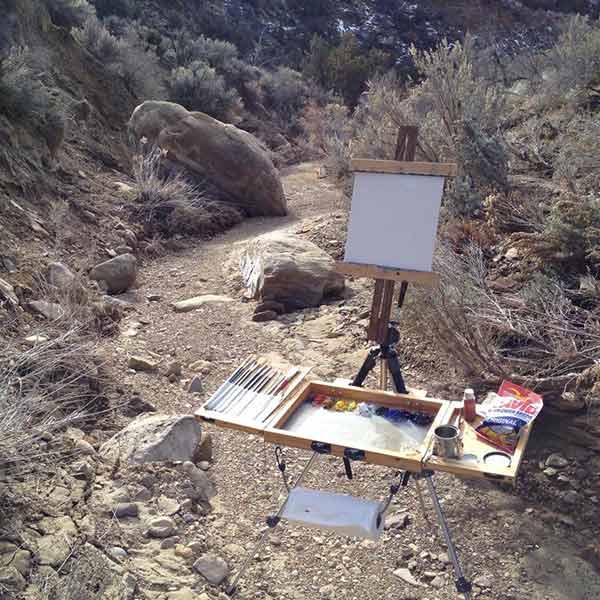Who doesn’t like canyons? They create amazing vistas. But John Lintott likes to go down into them and paint the intimate scenes that a canyon hiker comes to love.
Lead Image: John Lintott’s setup, ready to paint in Hunter Canyon in Colorado
Lintott refers to Hunter Canyon, located just north of Grand Junction and Fruita in Colorado, as “a big drainage canyon.” It’s dry most of the year, and it runs north-south. “Because of its orientation you get nice morning and evening light, but it’s really quick,” says Lintott. “But the backlight in midday is great, and it stays that way for hours. I love to paint rocks, and there are plenty of those in Hunter Canyon. I also like the juniper trees.”
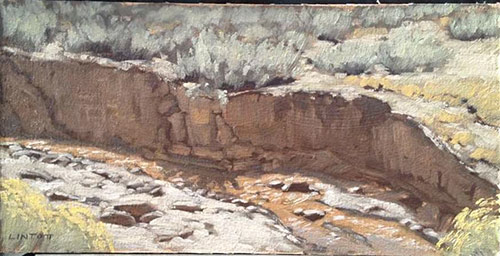
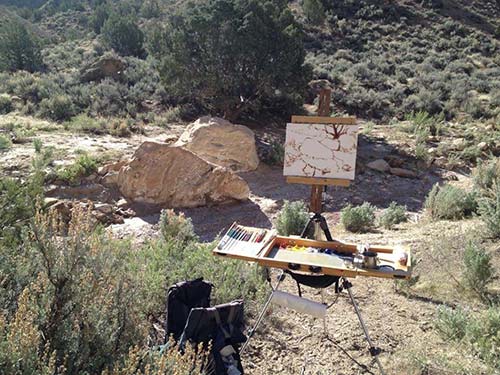
When the artist talks about the steady light, he is referring to seasons other than summer. “In winter you get that lower angle of incidence, so everything is backlit and you get to play with all this stuff in the shadows,” says Lintott. “In the summer it’s really hot, and all the shadows are top-down — it’s not that interesting.” He paints Hunter Canyon primarily in fall, winter, and spring.
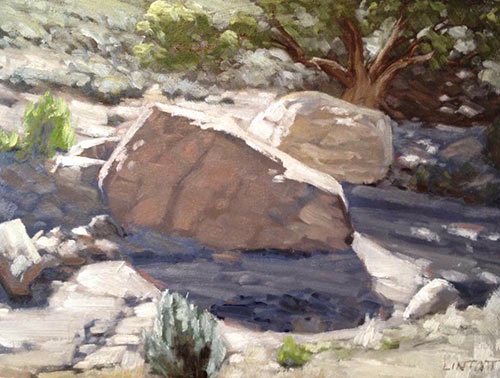
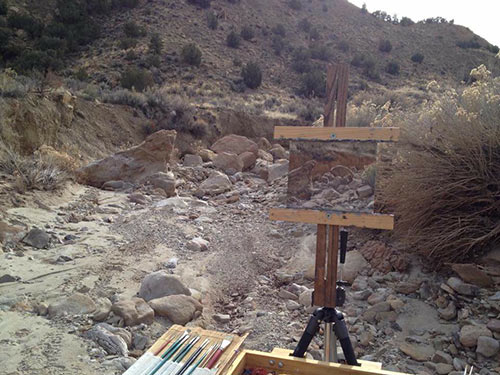
It’s public land, located just 10 miles from Lintott’s home, so Hunter Canyon is also convenient. The area is popular with four-wheelers, and the road gets rougher the deeper you go into the canyon. Lintott’s trusty Tacoma truck can handle it. “When you get up in there pretty high up, the road gets really gnarly,” he says. “There are not too many people up there. I have had times when I have had to engage the rear differential lock and crawl out like a tank.” This means he gets solitude while painting.
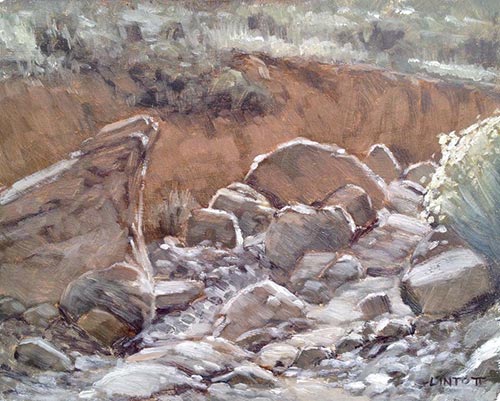
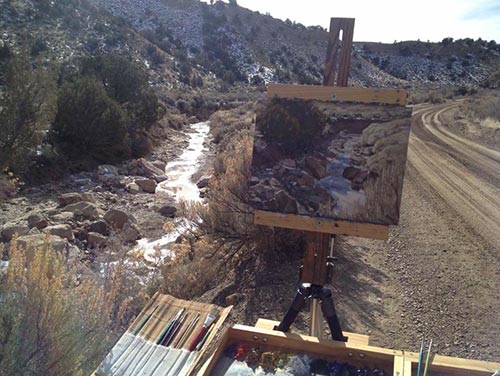
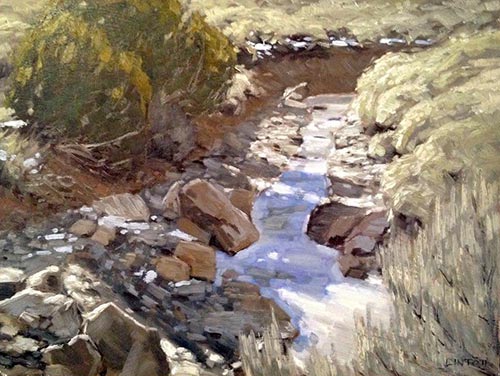
Lintott often paints along the wash, at the bottom of the canyon, far below the striated cliffs and sandstone towers. By doing so he actually paints the scenes more often seen by visitors to the canyon — when hiking, most of the hike is through this landscape. “It’s pretty fun to paint paintings along the top rim,” he says. “But up in the canyon there are all sorts of more intimate light-relationship paintings. I think the biggest challenge is subtlety. I have to really tone back all of my colors to have really subtle variances. Value is the most prominent thing. Everything is pretty gray. It creeps toward the monochromatic, with little punches of color. You do get the greens of junipers, the blues of shadows, and the oranges of reflected light from rocks. But to keep more emphasis on the main attraction, I have color there, and pull back elsewhere, rather than having it get too drowned out by a lot of color.”
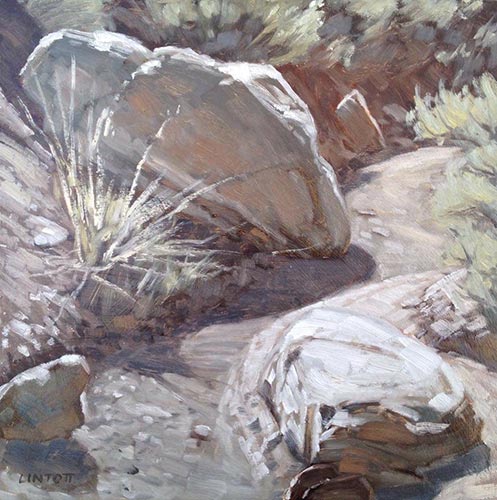
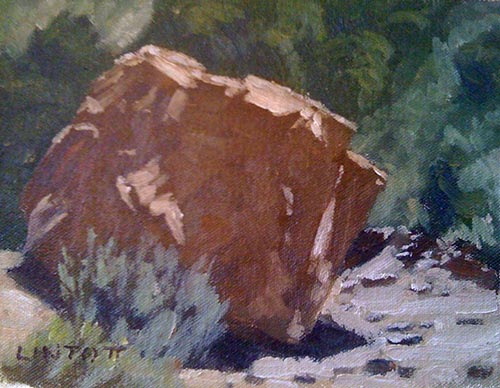
This all might seem like the sound of an artist running away as fast as possible from sales, but just the opposite is true. “I’ve sold all but one,” Lintott says. “One I posted on Facebook and somebody immediately offered to buy it. A lot of the time people have been there, and they might not recognize specifics but say, ‘Oh, that looks like it is up in the Book Cliffs.’ I’m trying to communicate the feel of Colorado canyon intimate scenes, what light and shadow relationships are doing for me up there. What I want is for others to see what I’m inspired by. To me, that is sort of a neat thing.”

